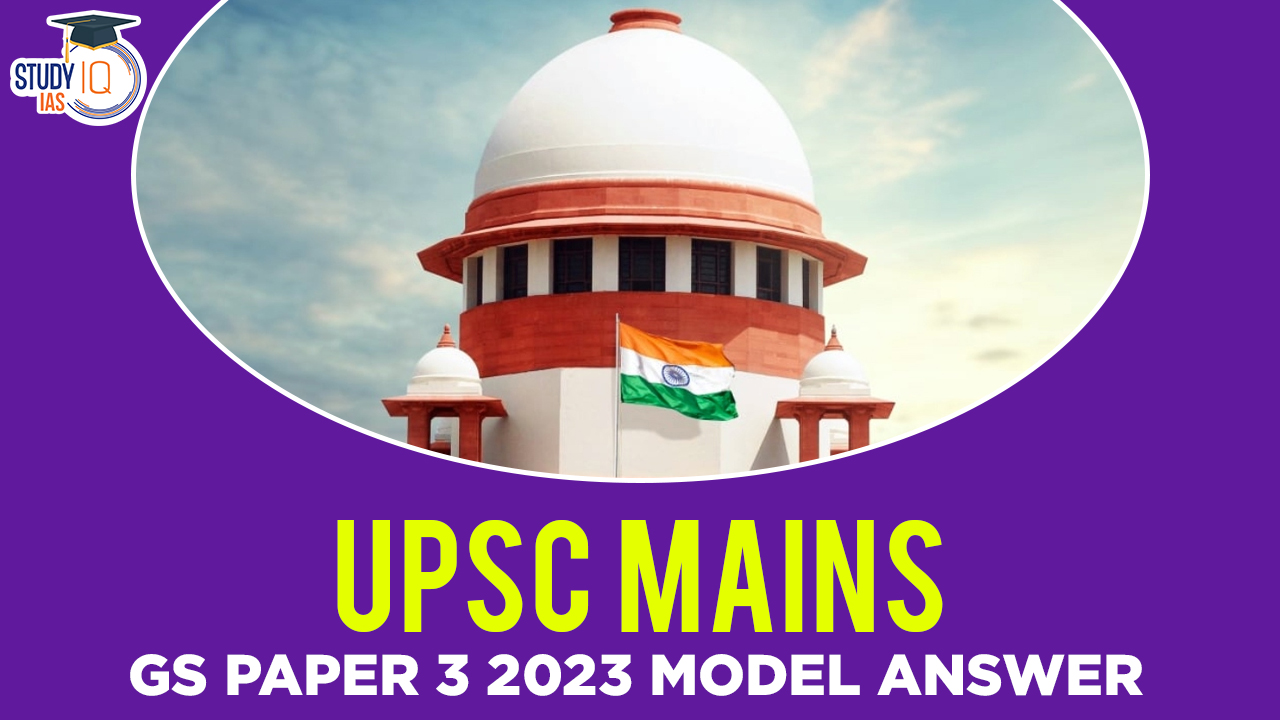Q10. The use of unmanned aerial vehicles (UAVs) by our adversaries across the borders to ferry arms/ammunitions, drugs, etc., is a serious threat to the internal security. Comment on the measures being taken to tackle this threat. (10m) – Internal Security
Introduction
The use of Unmanned Aerial Vehicles (UAVs) or drones by our adversary state and non-state actors pose a serious threat to India’s internal security. Drones were used to drop explosives at the Jammu’s Air Force Station and have often been used to ferry arms and drugs across the LOC and International Borders.
There has been a significant increase in the drone sightings along the border.
Body
Threat to Internal Security posed by UAVs:
-
- Targeting Key assets: Breach in sensitive areas, such as military installations, government buildings, and critical infrastructure. E.g. Jammu airbase attack
- Non-kinetic operations: in which drones are used to smuggle counterfeit currency, drugs, small arms, and ammunition across the border. E.g. In the Poonch attack drones were used to drop weapons and cash to militants who carried out the attack.
- Narco Terrorism: significantly felt across the Punjab border, where narco–terrorism has intensified.
- Espionage or surveillance activities by malicious actors. E.g. Pakistan is using it as a strategic tool to gain an advantage, Aiding Insurgents with reconnaissance.
Measures being taken to tackle this threat
- DRDO’s anti-drone system D4S – The Drone Detect, Deter and Destroy system is the first indigenously developed anti-drone system. It is being used to secure critical assets.
E.g. The DRDO’s system was deployed at the Red Fort on 15 Aug 2022 - Counter-unmanned aircraft systems (C-UAS) technology is being developed with focus on both “soft kill” (blocking communication lines) as well as “hard kill” (bringing down the drone) techniques. E.g. DURGA II (Directionally Unrestricted Ray-Gun Array), a 100 KW light weight DEW system.
- Internal Collaboration and sharing of technical expertise for developing anti drone technology. E.g. iCET – India – US
- Promoting indigenous development by the private and public sector under the New Drone Policy and Rules.
- Anti-drone systems have been deployed in border areas of Punjab to counter the drone threats. Further, an anti-rogue drone SOP has been formulated and circulated to field units and is being followed.
- Institutional measures: MHA has established the Anti Rogue Drone Technology Committee (ARDTC) under supervision of DG BSF with the mandate to evaluate the technology available to counter rogue drones and certify its effectiveness in dealing with rogue drones.
- Community Engagement: The general public in border areas have been sensitized and made aware of such UAV/Drone activities, their likely security implications and are encouraged to inform about any such activities to BSF as well as the local police.
Concerns with the measures
- There is no single comprehensive Anti- drone strategy.
- There is the problem of swarm drones, where scores of drones overwhelm and confuse detection systems.
- Conventional radar systems are not meant for detecting small UAVs.
- A drone threat can emerge in different scenarios with different stakes at risk and hence, a ‘one size fits all’ approach to anti-drone solutions may not work.
Way Forward
We need a comprehensive counter drone strategy which must involve the understanding of the evolving risks posed by the malicious and illegal use of drones, as well as take a ‘full spectrum’ approach to deter, detect, and disrupt drone misuse.
Check out the UPSC Mains GS Paper 3 2023 Analysis with detailed expatiation of the topics of Mains GS Paper 3 By the Study IQ Experts


 NATO Countries List 2025, Members, Funct...
NATO Countries List 2025, Members, Funct...
 UPSC Prelims Syllabus 2025 PDF, Check Su...
UPSC Prelims Syllabus 2025 PDF, Check Su...
 UPSC Toppers 2024 Felicitation Program b...
UPSC Toppers 2024 Felicitation Program b...





















